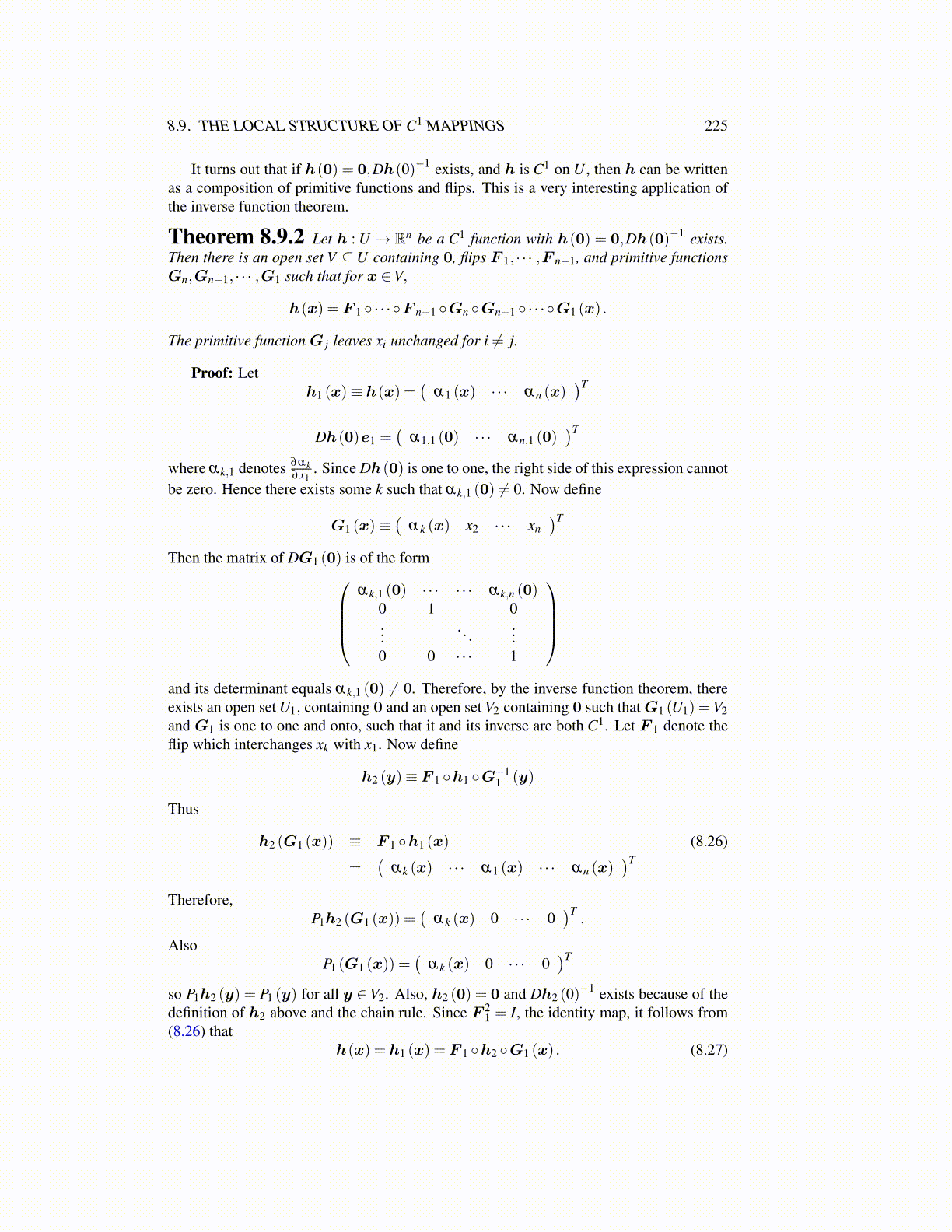
8.9. THE LOCAL STRUCTURE OF C1 MAPPINGS 225
It turns out that if h(0) = 0,Dh(0)−1 exists, and h is C1 on U , then h can be writtenas a composition of primitive functions and flips. This is a very interesting application ofthe inverse function theorem.
Theorem 8.9.2 Let h : U → Rn be a C1 function with h(0) = 0,Dh(0)−1 exists.Then there is an open set V ⊆U containing 0, flips F 1, · · · ,F n−1, and primitive functionsGn,Gn−1, · · · ,G1 such that for x ∈V,
h(x) = F 1 ◦ · · · ◦F n−1 ◦Gn ◦Gn−1 ◦ · · · ◦G1 (x) .
The primitive functionG j leaves xi unchanged for i ̸= j.
Proof: Leth1 (x)≡ h(x) =
(α1 (x) · · · αn (x)
)T
Dh(0)e1 =(
α1,1 (0) · · · αn,1 (0))T
where αk,1 denotes ∂αk∂x1
. Since Dh(0) is one to one, the right side of this expression cannotbe zero. Hence there exists some k such that αk,1 (0) ̸= 0. Now define
G1 (x)≡(
αk (x) x2 · · · xn)T
Then the matrix of DG1 (0) is of the formαk,1 (0) · · · · · · αk,n (0)
0 1 0...
. . ....
0 0 · · · 1
and its determinant equals αk,1 (0) ̸= 0. Therefore, by the inverse function theorem, thereexists an open set U1, containing 0 and an open set V2 containing 0 such thatG1 (U1) =V2and G1 is one to one and onto, such that it and its inverse are both C1. Let F 1 denote theflip which interchanges xk with x1. Now define
h2 (y)≡ F 1 ◦h1 ◦G−11 (y)
Thus
h2 (G1 (x)) ≡ F 1 ◦h1 (x) (8.26)
=(
αk (x) · · · α1 (x) · · · αn (x))T
Therefore,P1h2 (G1 (x)) =
(αk (x) 0 · · · 0
)T.
AlsoP1 (G1 (x)) =
(αk (x) 0 · · · 0
)T
so P1h2 (y) = P1 (y) for all y ∈V2. Also, h2 (0) = 0 and Dh2 (0)−1 exists because of the
definition of h2 above and the chain rule. Since F 21 = I, the identity map, it follows from
(8.26) thath(x) = h1 (x) = F 1 ◦h2 ◦G1 (x) . (8.27)